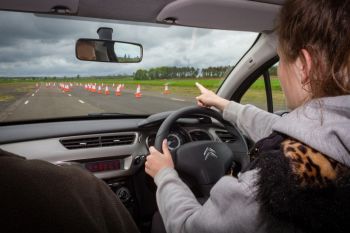IAM RoadSmart to drive forward tyre safety awareness
Posted on
IAM RoadSmart, the UK's leading road safety charity with a focus on improving driving and riding skills, is an official supporter of TyreSafe, the UK’s not-for-profit tyre safety awareness organisation. 
Formed in 1956, IAM RoadSmart has 60 years experience in making Britain’s roads safer by improving driver and rider skills through coaching and education. With more than 200 groups nationwide and 7000 drivers and riders actively participating in its acclaimed and widely-recognised courses, IAM RoadSmart is considered the leading advanced driver training provider in the UK. Having direct contact with thousands of motorists every day, a significant presence in the media and being a respected source of information for road safety policymakers and stakeholders,
IAM RoadSmart CEO, Sarah Sillars, OBE and Hon FIMI, said: “IAM RoadSmart’s mission is to improve driving and riding skills to help reduce the number of accidents and incidents on Britain’s roads. Over the course of the charity’s illustrious 60-year history, our trainers and coaches have enhanced the skills of nearly half-a-million drivers and we have ambitions to increase the number of participants through a broader offering. Educating drivers and riders on all aspects of road safety will remain an essential part of that, and access to TyreSafe’s expertise and materials will be a considerable asset.”
Stuart Jackson, chairman, TyreSafe, said: “IAM RoadSmart is not only the pre-eminent provider of driver training in the UK, it’s also one of the most respected names in the automotive industry. Its official support for TyreSafe reflects the growing number of organisations acknowledging the need to raise the tyre safety awareness agenda among Britain’s motorists. Tyres are one of a vehicle’s primary safety features and need regular maintenance checks to ensure they are roadworthy - we welcome IAM RoadSmart’s support in spreading this message to Britain’s motorists.”
TyreSafe raises awareness of the dangers of defective and illegal tyres.
The not-for-profit organisation recommends drivers check their tyres’ pressure, condition and tread depth at least once a month and before long journeys, and offers advice and information relevant to all motorists.



